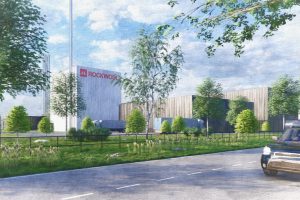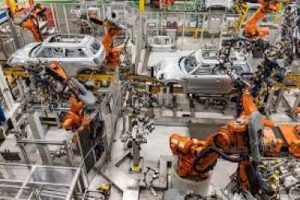Latest CBI survey shows Q2 pick-up in manufacturing orders

NEW orders in the manufacturing sector increased in the three months to July for the first time in a year, while production continued to rise modestly, latest figures have claimed.
The CBI said its latest quarterly Industrial Trends Survey indicated optimism among manufacturers about both the general business situation was growing compared with the previous three months.
The survey also showed export prospects for the year ahead had grown for the second quarter in a row.
Meanwhile, employment in the sector also continued to rise, recording the strongest growth in a year – the 12th consecutive quarter hiring has risen.
The survey of 390 firms found that both domestic and export orders rose – though still disappointing manufacturers’ expectations of stronger growth – domestic orders recorded the strongest growth in a year, and export orders the fastest in more than two years.
Firms anticipate a further modest rise in orders and output in the coming three months, and expectations for growth in new domestic orders are at their highest since April 2012.
Elsewhere, there were signs of the squeeze in manufacturers’ margins easing. Domestic price inflation picked up a little in the three months to July, in line with expectations. But, growth in manufacturers’ unit costs fell to a year-low and is expected to fall further in the coming quarter.
Despite a further rise in optimism, investment intentions remained muted. Planned spending over the next 12 months (compared with the previous 12 months) on buildings is expected to be unchanged, while planned capital expenditure on plant and machinery deteriorated slightly, though remained above average.
When asked about factors likely to limit investment, manufacturers most often cited uncertainty about demand, which was of slightly greater concern than usual.
Stephen Gifford, CBI Director of Economics, said: “Manufacturers have seen a pick-up in activity across the board this quarter, with new orders and production continuing to rise.
“Optimism in the sector has risen again, and demand conditions are expected to improve further in the coming three months.”
He said the gentle rise in confidence was being reflected in the rise in headcount.
However, he added that manufacturers remained concerned about political and economic conditions abroad limiting export orders, which was likely to reflect heightened uncertainty over the global economic outlook.
Key findings of the Q2 survey were:
• 32% of firms reported an increase in total new orders and 27% said they decreased, giving a balance of +5%, the highest since April 2012 (+8%)
• The balance for domestic new orders (+6%) was the highest since July 2012 (+6%) and the balance for export new orders (+7%) was the highest since April 2011 (+24%)
• Output increased modestly for the second consecutive quarter (+7%), with 28% of firms saying output volumes were up, and 21% saying they were down
• Manufacturers said they were slightly more optimistic about their business situation than in the previous quarter, with 20% of firms saying they were more optimistic compared with three months ago and 13% of firms saying they were less optimistic, giving a balance of +7%
• Optimism about export prospects for the year ahead also grew, with 20% of firms saying they were more optimistic compared with three months ago and 14% of firms saying they were less optimistic, giving a balance of +6%
• Manufacturers’ stocks of raw materials were flat (+1%), while stocks of work in progress and finished goods were slightly up on the previous quarter (+3% and +5% respectively)
• Average domestic prices rose slightly (+7%), but export prices were flat (0%), while unit cost growth was at its lowest in a year (+13%)
• Numbers employed in the manufacturing sector increased (+13%)
For the next quarter a balance of +16% of manufacturers said they expected total orders to increase, while balances of +13% expect domestic orders to rise and +9% predict growth in export orders. An increase in output is expected by 29% of businesses although 15% expect a decline.








